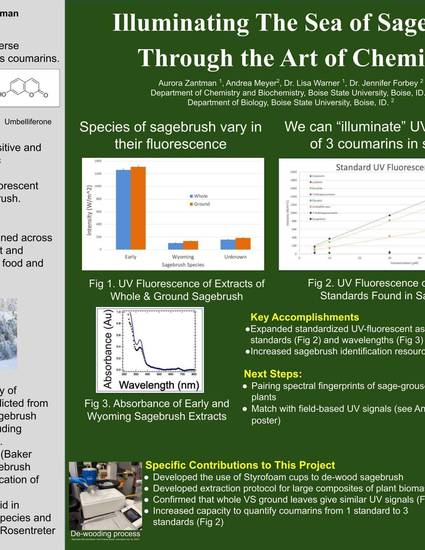
Ecological restoration aims to restore ecosystems that natural or anthropogenic disturbances have degraded. Sage-grouse, an iconic and nearly threatened avian species in the Intermountain Western United States, depend on intact sagebrush landscapes for both food and cover. Declining population trends in sage-grouse require efforts by restoration ecologists to prevent the species from being listed as endangered. While sagebrush has been identified as the primary food source for sage-grouse for most of their life, the foraging selectivity of sage-grouse and the chemical diversity of sagebrush subspecies make restoration of palatable sagebrush challenging. Proper classification and identification of sagebrush subspecies are needed to locate and restore palatable sagebrush subspecies into an ecosystem following ecological disturbances. One approach to classify sagebrush is by detecting a class of phytochemicals known as coumarins that fluoresce under excitation by ultraviolet (UV) light. The intensity of UV fluorescence can be used to assist with sagebrush identification. Our goal was to explore variation in the excitation, absorbance, and fluorescence of additional wavelengths in selected and avoided sagebrush species to develop spectral fingerprints that could further classify and predict palatability of sagebrush beyond the UV light test. As sage-grouse populations decline, the large swaths of sagebrush lands covering the West that support sage-grouse could be considered protected land, causing recreational and agricultural development to stop feasibly. The development of spectral fingerprints will enhance the functional management and restoration of sagebrush that will prevent sage-grouse from being listed as an endangered species maintaining multiple uses of the sagebrush landscapes for wildlife, recreation, and ranching.
Available at: http://works.bepress.com/lisa-warner/37/
